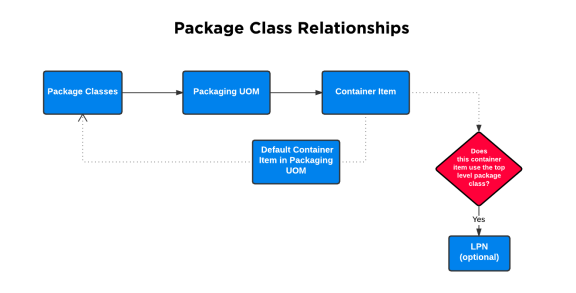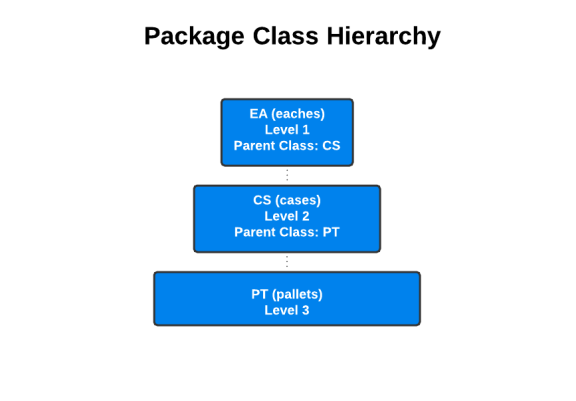Package classes are usually defined when Kenandy is first set up.
When you create container items, you need package classes set up so you can assign them to the container items. License Plate Numbers (LPNs) can be used to track container items in the top level of the package class hierarchy.

For example: You make t-shirts. In work orders, one t-shirt is measured as an "each" (EA). You sell t-shirts in cases (CS). And you store pallets that can hold a maximum of 10 cases.
Your package classes for your t-shirt business look like this:
